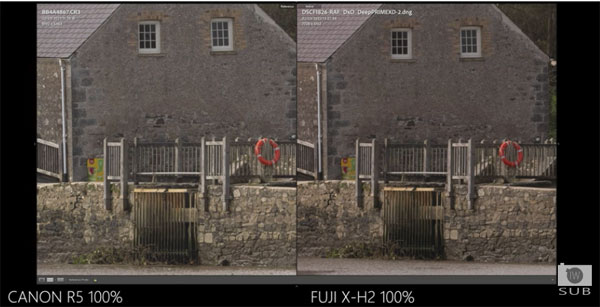David Domoney reveals ‘the worst mistake’ you can make when gardening
Now’s the best time to learn something new ahead of the warmer months
It’s an unfortunate fact than many photographers routinely hold their camera at eye level and point it straight ahead. There’s nothing wrong with doing this, and nice images are often the result, but sometimes there’s a better way.
The theme of this quick tutorial is experimenting with different perspectives to capture images with a unique look. This approach doesn’t require any special gear, tricky camera settings, or the like, but rather looking at the world in a different way and composing photos accordingly.
This quick lesson from the Photography Course YouTube channel is episode #32 of a 52-week series designed to simplify basic photographic concepts so you can create a style all your own and make images that stand out from the crowd. By following today’s simple tips you’ll become a better photographer in less than five minutes.

Instructor Taya Iv says, “I’ll show you how to do this in a fun way, using practical real-world techniques.” While her goal is capturing eye-catching photos in the camera, she also provides a few image-editing tricks.
Put simply, perspective is all about conveying the relationship between different elements in a scene, and there’s more to this than simply shooting from a high or low vantage point. The simple methods you’ll learn are useful for a wide variety of subjects, and will help you create interesting photographic illusions.
Iv’s first tip is easy: Upon arriving at a location, before pulling out your camera, spend a few moments looking up and down—maybe even glancing side-to-side while carefully scrutinizing the scene. Chances are you’ll discover a more creative way to compose a shot than if you pointed the camera straight ahead.

Another impactful method is what Iv calls “change the rotation of your images.” This one is easily accomplished during the editing process and works with just about any software you use. She also demonstrates the benefits of shooting from ground level—a technique that’s also useful for capturing macro images and when photographing pets and little kids.
Iv has a couple other helpful tricks for switching up perspective, so take a close look and approach your next shoot with a new and more creative mindset. Chances are the response to your newfound method of composition will be an emphatic “wow!” After watching this video head over to Iv’s instructional YouTube channel where you’ll find previous episodes in this series and much more.
We also suggest you check out a recent tutorial we posted, explaining how to shoot better photos by avoiding five common mistakes.
Back in the early days of digital photography, a popular topic of discussion was the differences in image quality between film cameras and digital models. With that concern now settled, the issue of the day is an ongoing debate regarding the relative merits of full-frame vs. digital cameras.
The video below provides an interesting real-world comparison using print quality to draw conclusions. While the true quality of a print is pretty much impossible to evaluate by looking at 72dpi images online, we’re more than willing to accept the conclusions drawn by trusted instructor Ian Worth.
Worth is an accomplished pro who says he’s passionate about sharing the secrets to his success. What makes his comparison so intriguing is that it comes from the perspective of a landscape photographer who, like others of his ilk, considers image detail to be critically important.

In addition to comparing large prints made with sensors of both sizes, Worth also evaluates the images in Lightroom. So if you’re thinking about “moving up” to a full-frame DSLR or mirrorless camera, this episode might help you make up your mind.
In this behind-the scenes lesson you’ll watch Worth photograph a stunning castle with two cameras. One is a full-frame Canon EOS R5, and the other is a crop-sensor Fujifilm X-H2. They’re both high-end models designed for professional photographers. He employs high-quality lenses of different focal lengths to shoot a variety of images.
Worth does everything possible to make this comparison a valid one. And whether he’s shooting with a long telephoto or a wide-angle lens, his cameras are securely locked down on a sturdy tripod.

While watching Worth work you’ll also pick up some solid tips on composition, camera settings, and exposure that will prove valuable regardless of the camera you use. So take a close look and see if you agree with his conclusions.
Be sure to visit Worth’s instructional YouTube channel, especially If outdoor photography is your thing, where you’ll find much more to learn.
And don’t miss the earlier tutorial we posted from another pro, explaining how to use your camera’s EV-Compensation feature for perfect exposures every time.
